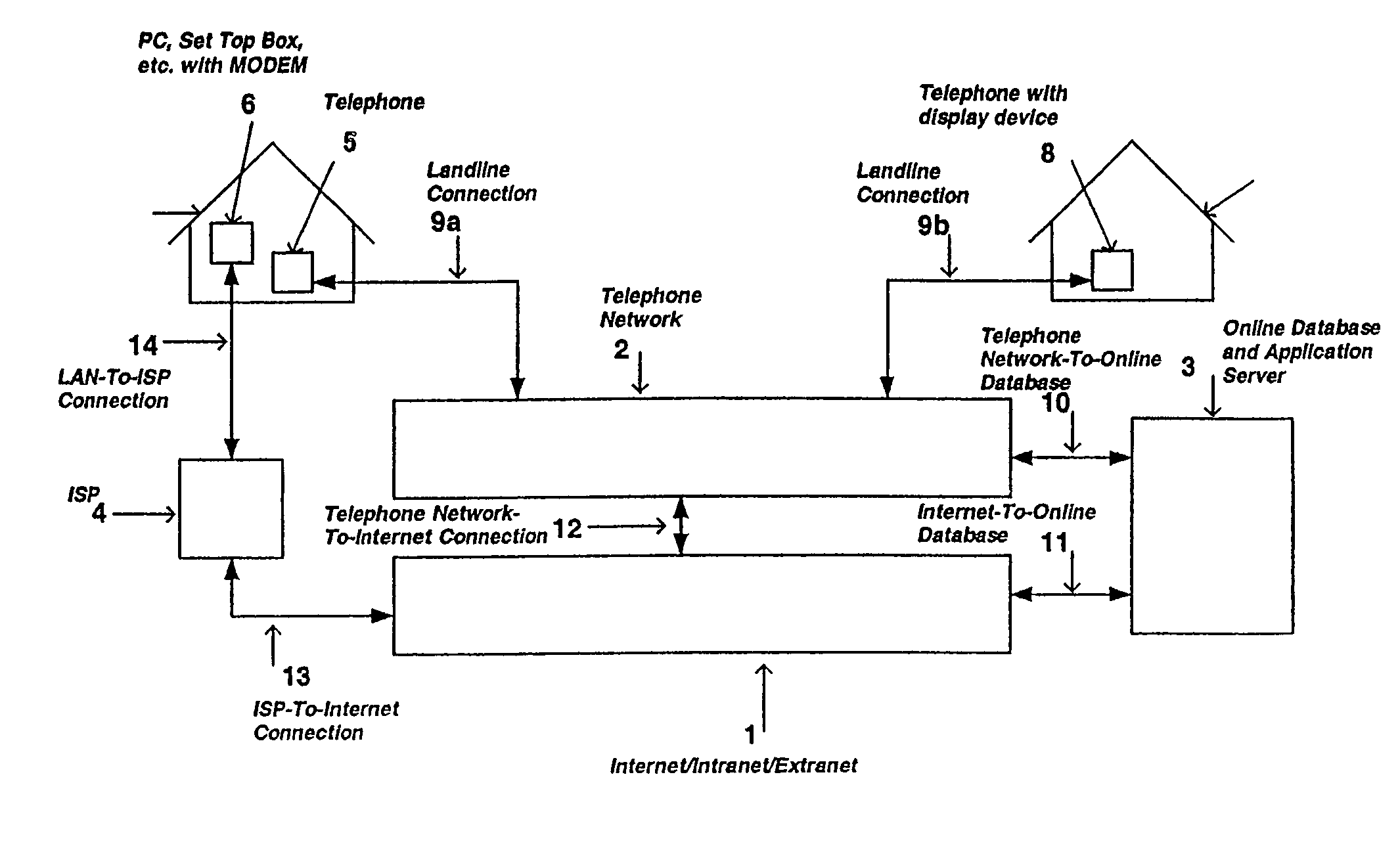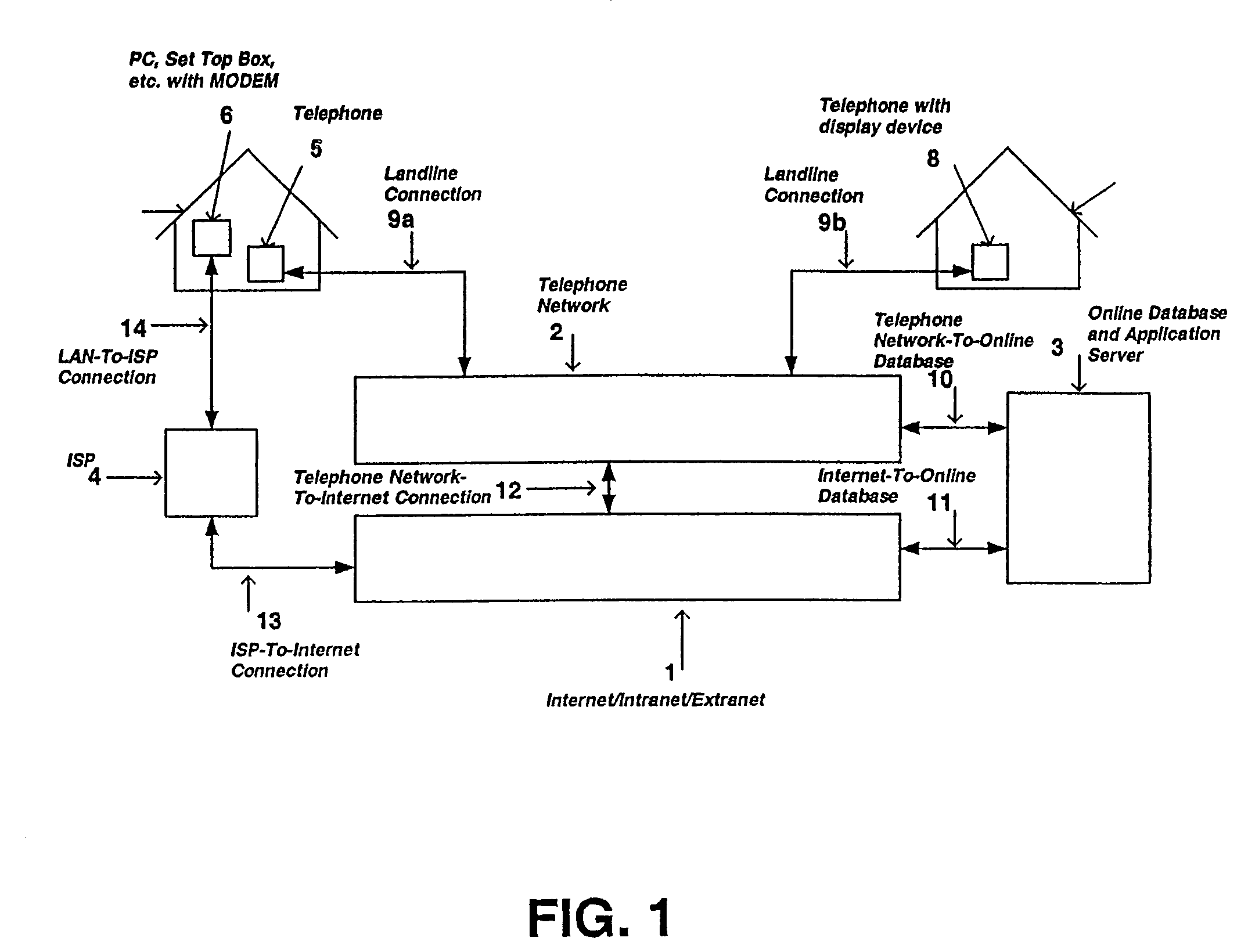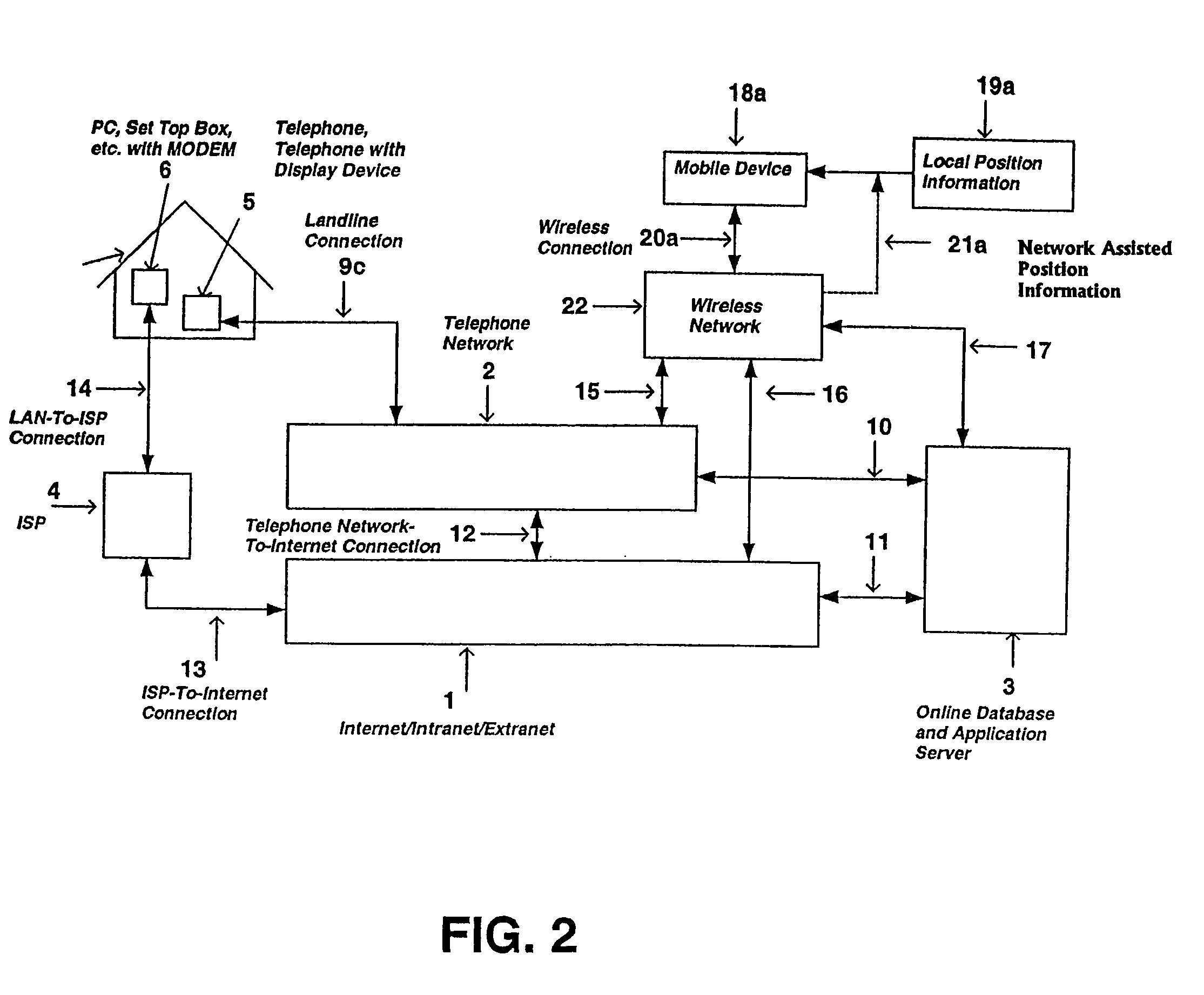System and method for providing routing, mapping, and relative position information to users of a communication network
a communication network and user technology, applied in the field of location and navigational systems and the determination of local and remote position information, can solve the problems of inability to implement cross-referencing of telephone numbers to addresses locally, information that is out of date and inaccurate, and systems that do not have storage capacity, etc., to achieve the effect of low processing capacity, limited resources, and small display area
- Summary
- Abstract
- Description
- Claims
- Application Information
AI Technical Summary
Benefits of technology
Problems solved by technology
Method used
Image
Examples
Embodiment Construction
[0035]The various embodiments of the present invention will be described with reference to FIGS. 1-9. In the landline-to-landline example, as illustrated in FIGS. 1-9, a user places a telephone call from a standard telephone 5 and 54 to a destination telephone, such as another landline telephone 8 and 55. The landline standard telephones are typically connected to the telephone network 2 through a dedicated landline connection 9a and 9b. The telephone number that is dialed is known to the telephone network 2. When a standard telephone 5 and 54 is used to place a telephone call the telephone network 2 updates the online database and application server (ODAS) 3 with the originating and destination telephone numbers. In one embodiment this is typically done using a signaling system 7 (SS7) architecture via a connection 10 to the ODAS 3. The destination telephone 8 and 55 has an extended form of Caller-ID, such as consisting of a display, a processing unit, and a MODEM. This extended fo...
PUM
 Login to View More
Login to View More Abstract
Description
Claims
Application Information
 Login to View More
Login to View More - R&D
- Intellectual Property
- Life Sciences
- Materials
- Tech Scout
- Unparalleled Data Quality
- Higher Quality Content
- 60% Fewer Hallucinations
Browse by: Latest US Patents, China's latest patents, Technical Efficacy Thesaurus, Application Domain, Technology Topic, Popular Technical Reports.
© 2025 PatSnap. All rights reserved.Legal|Privacy policy|Modern Slavery Act Transparency Statement|Sitemap|About US| Contact US: help@patsnap.com



